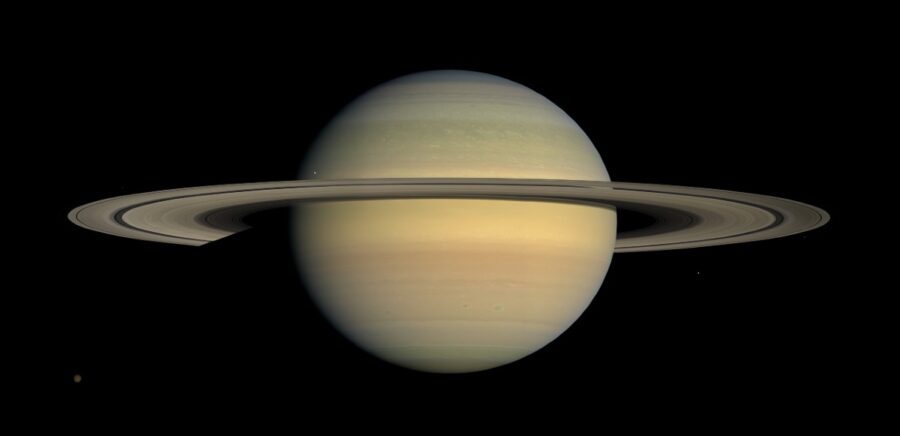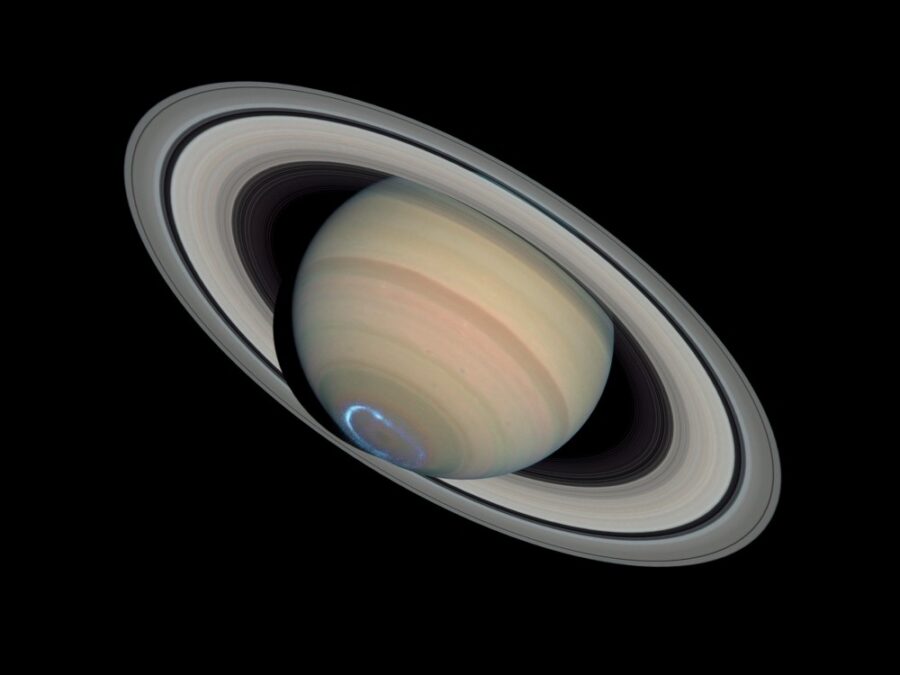Saturn Is Destroying Its Own Rings, Baffling Scientists
Saturn is losing its rings through erosion of the ice particles that comprise each of the seven layers.

It looks like Earth isn’t the only planet in our universe having issues—Saturn is losing its own rings, according to Space.com. The innermost rings have been eroding for some time now, so NASA is planning to find out exactly how long they have left. It could be anywhere between 100 million years and 300 million years, so scientists will have plenty of time to assess the damage.
Saturn, which is the sixth farthest planet from the sun, has seven rings that encircle the planet. The innermost rings are made up of ice, so they are slowly eroding, causing downpours of rain onto the gassy planet. Scientists have known that the rings have been eroding since the 1980s, but they are still unsure how much longer they have left.
To learn more about the erosion of Saturn’s rings, scientists will begin using NASA’s James Webb Space Telescope and Hawaii’s Keck Observatory to get a better look at what exactly is going on 939.06 million miles away. Using their telescopes, the scientists will be able to better measure the emissions coming from a hydrogen molecule in Saturn’s atmosphere. These emissions will help determine how much rain comes from the icy rings.
Scientists are still trying to figure out exactly what is causing Saturn’s rings to erode. Their current theory points fingers at space rocks and radiation from the sun.
As space rocks and the sun’s radiation disturb Saturn’s rings, particles within them are given an electric charge, causing them to bind to the planet’s magnetic field. The planet’s gravity then pulls these icy particles in, which means it’s essentially destroying itself. Though there is likely nothing we can do to stop the rings from eroding, it’s still important for scientists to better understand our universe.

Scientists aren’t sure how much longer Saturn’s rings will be around, but they also aren’t completely sure how long they have been there to begin with. Some data found that the rings have always been a part of the planet, meaning they date back to when the solar system began 4.5 billion years ago. But new data from the Cassini spacecraft says that the rings may be as new as 10 million to 100 million years.
In other outer space news, a mission to Mars is officially in the works, kind of. NASA has recruited four volunteers who will give up their ordinary Earthly lives to live in a simulated environment to test the waters of what it could be like to live on Mars. The experiment will take boredom and isolation to a whole new level as the volunteers must stay within their shelters for an entire year, only going outside for occasional spacewalks.
Meanwhile, on Earth, we can expect to see a massive asteroid come dangerously close to our planet. The asteroid will get as close to us as the Moon, which is only about 262,790 miles, so we can rest easy knowing that it will pass right by us if it doesn’t get burnt up in our atmosphere. From Earth to Mars, to Saturn, our own solar system is still full of mysteries waiting to be discovered.












